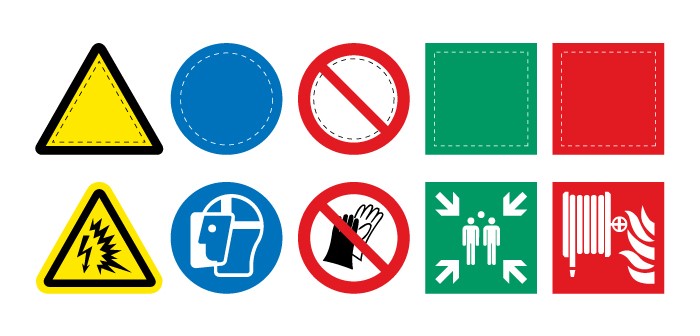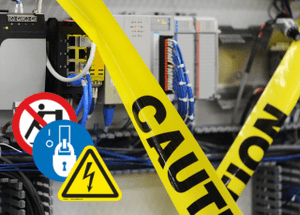National Preparedness Month Tips: Things to Consider When Planning

National Preparedness
Month: Are You Ready?
September is National Preparedness Month, which is a time
for citizens and businesses to take a look at their disaster plans and make
changes. While Hurricane Dorian merely sideswiped the contiguous United States,
the sheer size and power of the storm should be enough to give any American
pause. One must only look at the damage the storm caused when it stalled over
the Bahamas to understand the utter destruction natural and man-made disasters
can unleash.
Why Preparation
Matters
Preparation is always a good idea for your family, but if
you’re a business owner, it’s also part of your responsibility to your workers.
Following Hurricanes Katrina and Sandy, legal precedent started to emerge about
an organization’s duty to prepare. If it’s determined that you failed to
clearly mark escape routes with
emergency
signs
and other aids, you could be found liable for the death or
injury of an employee.
Recent ISO 7010 Updates Related to Emergencies and Emergency
Planning
ISO 7010 is an International Organization for
Standardization (ISO) technical standard for graphical hazard symbols on hazard
and safety signs, including those indicating emergency exits. This past August,
the ISO 7010:2019 standard was revised. The standard now includes the addition
of new symbols, with many related to emergency and emergency planning,
including: fire blanket, protection shelter, emergency exit for those with
impairments, medical grab bag and survival clothing.
Understanding ISO Symbols and Symbol Surround Shapes
The symbols in ISO 7010 use colors
and principles set out in ISO 3864-2. According to ISO, there are five types
of safety symbols each with its own defined combination of color, contrast
color and shape:
- Warning: black-banded yellow triangle with black symbol
- Mandatory action: blue circle with white symbol
- Prohibition: black symbol behind red circle with slash
- Safety equipment location signs/safe condition: green rectangle with white symbol
- Fire equipment location: red rectangle with white symbol

The ISO surround shapes for each of the five types of safety symbols (top row) and examples of ISO or ISO-formatted safety symbols (bottom row)
Planning Is Key
Now that you have some insights about the standards, it
would be a good idea to start updating your plan during this month of
heightened awareness. Here are a few things to consider.
Potential Threats
The United States features nearly every type of geography on
the planet, which is why vulnerabilities can often vary greatly from one region
to another. While people in California deal with the constant threat of
earthquakes and wildfires, those on the gulf coast spend the late summer and
fall tracking tropical depressions as they move off the west coast of Africa.
During Disaster Preparedness Month, take a look at your area’s past and make a list
of the emergencies that regularly happen. It’s much harder to prepare without a
basic idea of threats that could be in your future.
Events like 9/11 show that it’s nearly impossible to anticipate every potential threat, but preparedness for likely disasters can often be adapted when the unexpected does occur. Once you’ve come up with a list of threats to yourself or your business, start working on a plan of action for each one. Here are a few suggestions on how to prepare for various situations.
Earthquakes
While California and Alaska frequently experience
earthquakes, recent temblors in areas such as the Mid-Atlantic are a reminder
that tremors could strike anywhere. To make sure your home or business is ready
when the ground starts shaking, take a few precautionary steps:
- Don’t hang anything heavy over desks, beds or other areas where people live and work.
- Make sure large appliances are secured and outfitted with flexible water and gas connections.
- Anchor top-heavy furniture securely to walls and move heavier objects to lower shelves whenever possible.
- Educate employees or family members about staying clear of windows and hiding under sturdy objects until the shaking subsides, and point out safe spaces in your building.
Hurricanes and Floods
Hurricanes pack strong winds and heavy rains, but a
significant amount of the damage done during these weather events comes from
the storm surge that inundates the area with water. When a hurricane takes aim
at your location, start by boarding up windows and securing outdoor furniture.
Familiarize yourself with local evacuation routes and come up with a meeting
point where everyone can check in.
A hurricane isn’t the only way for an area to flood. In densely populated areas with minimal permeable surfaces, it can only take a heavy rain to cause disastrous flash flooding. Floods can often strike with minimal warning, which is why the best preparatory step you can take is examining your proximity to streams, dams and rivers to see if you’re vulnerable. When the water starts rising, turn off the electricity and other utilities and head to the highest point of the building until the situation improves.
Tornadoes
Each state in the contiguous United States has experienced
tornadoes at some point in history, which is why everyone should have a plan in
place. Because these destructive events happen so quickly, the best way to
prepare is education. Teach your people where the safest point in the building
is during a tornado and reinforce that information with signage that clearly
marks safe spaces and
exit signs.
Gather Appropriate
Supplies
It can often take a significant amount of time for
conditions to improve after a disaster, which is why it’s important to outfit
your safe spaces with ample supplies. Not only should your building have a
first aid kit in every shelter space, but it’s also a good idea to have one in
each of your vehicles. Stock shelters with three days of water, nonperishable
food, medical supplies, flashlights, radios and ample batteries to keep
everything powered.
Start Planning Today
Emergency Preparedness Month is a great time to
start working on a plan for your home or business, but don’t limit your efforts
to four weeks in September. When it’s time to outfit your building with
evacuation plan signs, labels and other visual devices, turn to the experts at
Clarion Safety Systems. To learn more about our products and services,
contact us online or call our
office at 1-877-748-0244 today.



